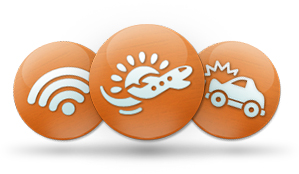 It’s been a while since I’ve had time to write – at least thoughtfully. We have been heads down since the beginning of the year finishing our user-centric data platform, data vault and permission-based data sharing service, and are excited to start moving into our next closed beta release shortly.
It’s been a while since I’ve had time to write – at least thoughtfully. We have been heads down since the beginning of the year finishing our user-centric data platform, data vault and permission-based data sharing service, and are excited to start moving into our next closed beta release shortly.
One of the biggest challenges with a product and model as different as ours – where individuals aggregate, own and use their personal data for their benefit – is demonstrating the real world value of such data and making it easy to manage in large amounts across one’s life. We developed the concept of a “data gem” to help make abstract, “lifeless” data more tangible and real, and to highlight its literal and figurative value (and where else would you store your gems but a vault!).
A data gem is discrete set of reusable, modular data that addresses some kind of activity, thing, issue or need. The three examples in the image are a Wi-Fi gem, which contains information about my router and how to access my Wi-Fi network, an Air Travel Preferences gem, which contains information about how I like to fly, and a Car Insurance gem, which effectively replaces the print or PDF car insurance policies locked away in my filing cabinet or my hard drive with actionable, structured data. Some gems are for organizing information in your life, while others are designed for sharing, and yet others for commercial activities.
The bright orange circle is Personal’s particular take on how a data gem might look, but the concept goes beyond our implementation. As we developed them, you can enter or import data once and have it populate the same fields across multiple gems. They are also designed to be modular so they can be easily combined when shared with others. For example, a babysitter could easily be granted access to related gems on the kids, the home, the television, and emergency contacts. The granularity of gems also allows a high degree of control over how much information is shared with others without creating burdensome user controls.
We have created about 100 gems so far, and are starting to engage others to define new gems and standards for making them as interoperable as possible. I would enjoy hearing your thoughts. S.